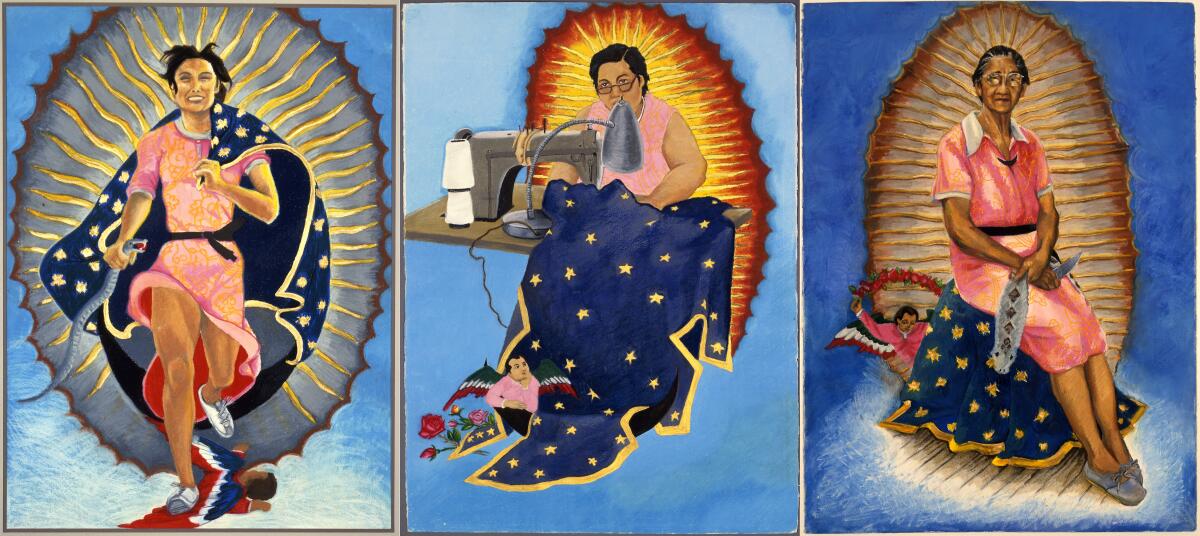Latinx Files: Fernandomania forever

Ahead of the 1991 season, the Los Angeles Dodgers made the difficult decision to cut pitcher Fernando Valenzuela.
The news did not sit well with some in L.A.’s Mexican American community, who saw the roster cut as a slap to the face. Some even called for a boycott.
“It’s apparent that the Dodgers don’t like Mexicans, but they like their money,” Raul Ruiz, one of the organizers, told The Times.
Nowadays, it seems unthinkable that Mexican American Dodgers fans would even consider turning their back on the team.
But that’s how invested fans were in Valenzuela then. Decades later, that loyalty has paid dividends not just for the former pitcher but also for the team.
The lasting legacy of Fernandomania: Fernando the pitcher might have faded into mediocrity, but Fernando the legend will live on forever.
The Latinx experience chronicled
Get the Latinx Files newsletter for stories that capture the multitudes within our communities.
You may occasionally receive promotional content from the Los Angeles Times.
That’s the main takeaway of the final episode of “Fernandomania @ 40,” our docuseries on Valenzuela’s rookie season and its cultural impact. It premieres today. You can watch it here.
And if you haven’t been watching along, I encourage you to. Even if you’re not a baseball fan, the series doubles as a great lesson in Los Angeles history. You can watch all 12 episodes here.
Also, since this is probably the last time I’m going to write about Valenzuela for a while, I’d like to take this opportunity to reiterate what columnist Bill Plaschke wrote about in May 2019, and remind the Dodgers that they are long overdue in retiring Valenzuela’s number. Yes, I get that the team only retires the numbers of players inducted into the baseball Hall of Fame, but if it weren’t for El Toro de Etchohuaquila, the team wouldn’t have the fans it does now.
Our daily news podcast
If you’re a fan of this newsletter, you’ll probably love our new daily podcast, “The Times,” hosted by columnist Gustavo Arellano, along with reporters from across our newsroom. Every weekday, it takes you beyond the headlines. Subscribe on Apple Podcasts and follow on Spotify.
Yolanda López, que en paz descanse

Chicana artist Yolanda López died of cancer last Friday in her San Francisco apartment. She was 79.
López is best known for her Virgen de Guadalupe series, a painted triptych that portrayed herself, her mother and grandmother as different versions of the revered holy figure. As my colleague Priscella Vega notes in the obituary she wrote for López, the series was the artist’s thesis for her master’s degree in fine arts from UC San Diego. The sheer brilliance of her work went over the heads of the panel of judges.
“I knew it was very dicey,” López said in 2020. “Most of my professors were not Christian. They were totally blind to the fact. I realized I had to tell them this is Christian image, this is the Virgin Mary, this is the mother of Jesus Christ. This is the Mexican version of the Virgin Mary.”
Though some of López’s work is currently at the Smithsonian American Art Museum, she had never been featured in a solo exhibition until now. On Oct. 16, “Yolanda López: Portrait of the Artist” will open at the Museum of Contemporary Art San Diego. It will run until April 24, 2022.
Do you celebrate Hispanic Heritage Month?
Hispanic Heritage Month, a federally recognized 30-day celebration of Latinx culture and people, kicks off next Wednesday. You can expect it to be the subject of next week’s newsletter. I’m genuinely curious, though: Does the month mean anything to you? If so, I’d love to hear from you at [email protected]
Consider subscribing to the Los Angeles Times
Your support helps us deliver the news that matters most. Become a subscriber.
Things we read this week that we think you should read
— California Gov. Gavin Newsom needs Latinxs to fend off a recall and keep his job. But as my colleagues Andrew J. Campa and Alejandra Reyes-Velarde report, would-be voters are preoccupied dealing with the effects of the COVID-19 pandemic, and politicians have not done enough to reach them.
— Patricia Cardoso struggled to find work in Hollywood after directing the 2002 landmark Latinx coming-of-age film “Real Women Have Curves.” Decades later, she is getting some overdue recognition. Cardoso and her film are part of the Significant Movies and Movie Makers gallery at the newly opened Academy Museum of Motion Pictures. Story by The Times’ Jessica Gelt.
— NBC News’ Carmen Sesin reports that COVID-19 misinformation is spreading through the U.S. Latinx communities thanks in large part to AM radio and social media platforms.
— On Tuesday night, a 7.0 magnitude earthquake struck Mexico. My timeline was filled with videos documenting the terrifying event, reminders that it can and will happen here in Southern California. With that came the realization that I am wholly unprepared for that moment. Thankfully, my colleagues over at the utility desk launched “Unshaken,” a newsletter that helps you be ready over the course of six weeks. You can sign up for it here. And if you’re the type of person who obsesses over natural disasters, you can also find all of our earthquake coverage here.
— Dodgers beat writer Jorge Castillo wrote about how veteran Albert Pujols has embraced the role of clubhouse mentor. The Dominican Republic-born player has even been christened with a new nickname: Tío Albert.
— For L.A. Taco, Janette Villafana profiled High Off Energy, a trio of Black men who have gone viral on TikTok for dancing to popular Spanish songs. A big motivator for launching the group? To further foster Black and Latinx unity.
“We said if we’re going to do this, there has to be a purpose, so we decided our purpose was to unify cultures. So from then on, it has been all about uniting Blacks and Latinos because we’re stronger together,” Tiant Lewis, one of the dancers, told Villafana. “And we have a lot of things in common from our culture, to our problems, to our dancing.”
The Latinx experience chronicled
Get the Latinx Files newsletter for stories that capture the multitudes within our communities.
You may occasionally receive promotional content from the Los Angeles Times.




